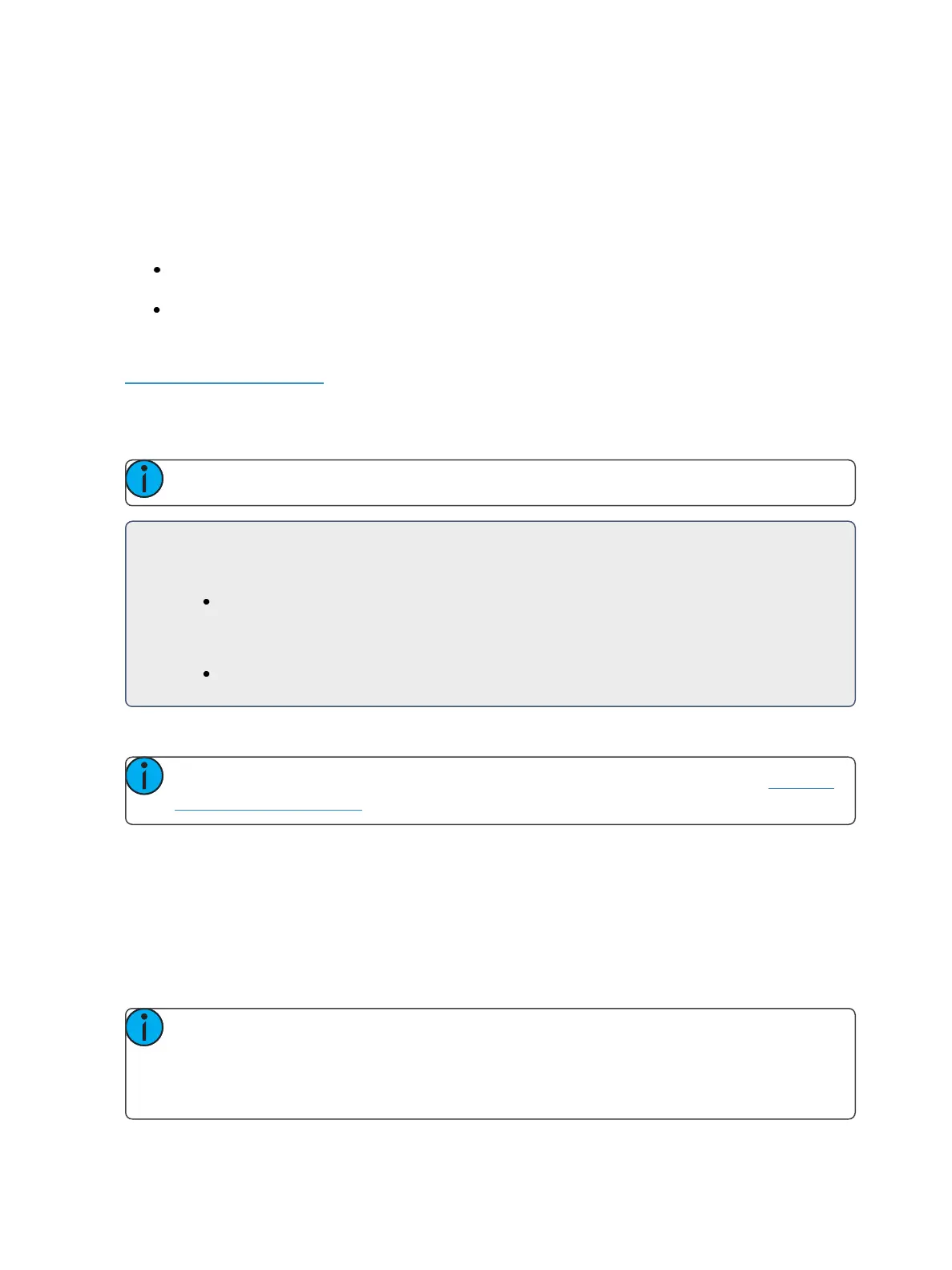254 Eos Family Operations Manual
Using Record Only in Live
[Record Only] is similar to [Record] except that it selectively stores only manually set values, pre-
venting unwanted levels (such as from a submaster or another cue list), from being recorded into the
cue. Therefore, when used to record a cue, only the manual data for channels will be stored in the
cue. Any values in the previous cue that were unchanged will track into the new cue.
All of the same commands used for [Record] may also be used for [Record Only].
[Record Only] <Cue> [Next] [Enter] - stores only the manually set values into the next cue in
the list.
[Record Only] [Cue] [3] [Enter] - stores only the manually set data into cue 3.
As with [Record], filters can further restrict stored data if deployed when using [Record Only]. See
About Filters (on page288)
Record and Record Only [+]
[+] can be used to specify a range of cues when using [Record] and [Record Only].
Note: If no cue number is entered before the [+], the current active cue will be used.
For Example:
To record only cues 5, 10, and 15:
[Record] <Cue> [5] [+] <Cue> [1][0] [+] <Cue> [1][5] <CueOnly/Track> [Enter]
To update the current cue and cue 7:
[Record Only] [+] <Cue>[7] <CueOnly/Track> [Enter]
Using [Cue Only / Track]
Note: For a more detailed summary of Cue Only and Tracking modes, please see Tracking
vs. CueOnly (on page14).
In Track Mode
When you create a new cue, any channel parameter data from the previous cue is tracked into the
new specified cue. Any changes in this new cue will also track forward into subsequent cues until a
move instruction is encountered. The [Q Only/Track] key is an exception to this behavior. When you
record a cue in the middle of an existing cue list, using the [Q Only] button will prohibit new inform-
ation from tracking into the subsequent cue. When you rerecord or update a cue, the modifications
will not track forward.
Note: In the following examples, the command [Q Only] indicates the same key hit of [Q
Only/Track] which is a single button on the keypad. The system setting determines the
actual context of the button depending on the mode in which the system is operating. For
clarity, only the contextual function of the button is used in the examples.

